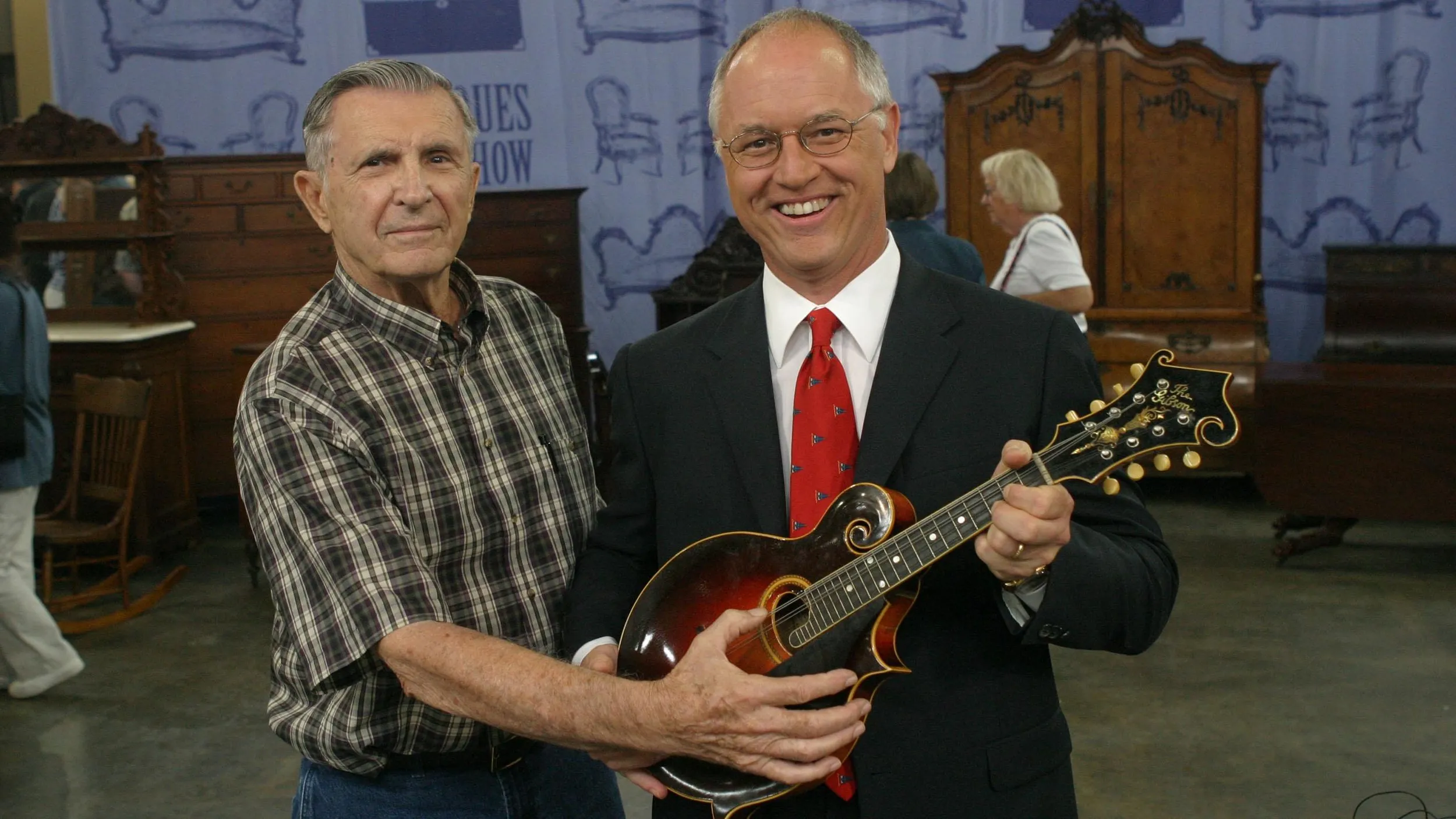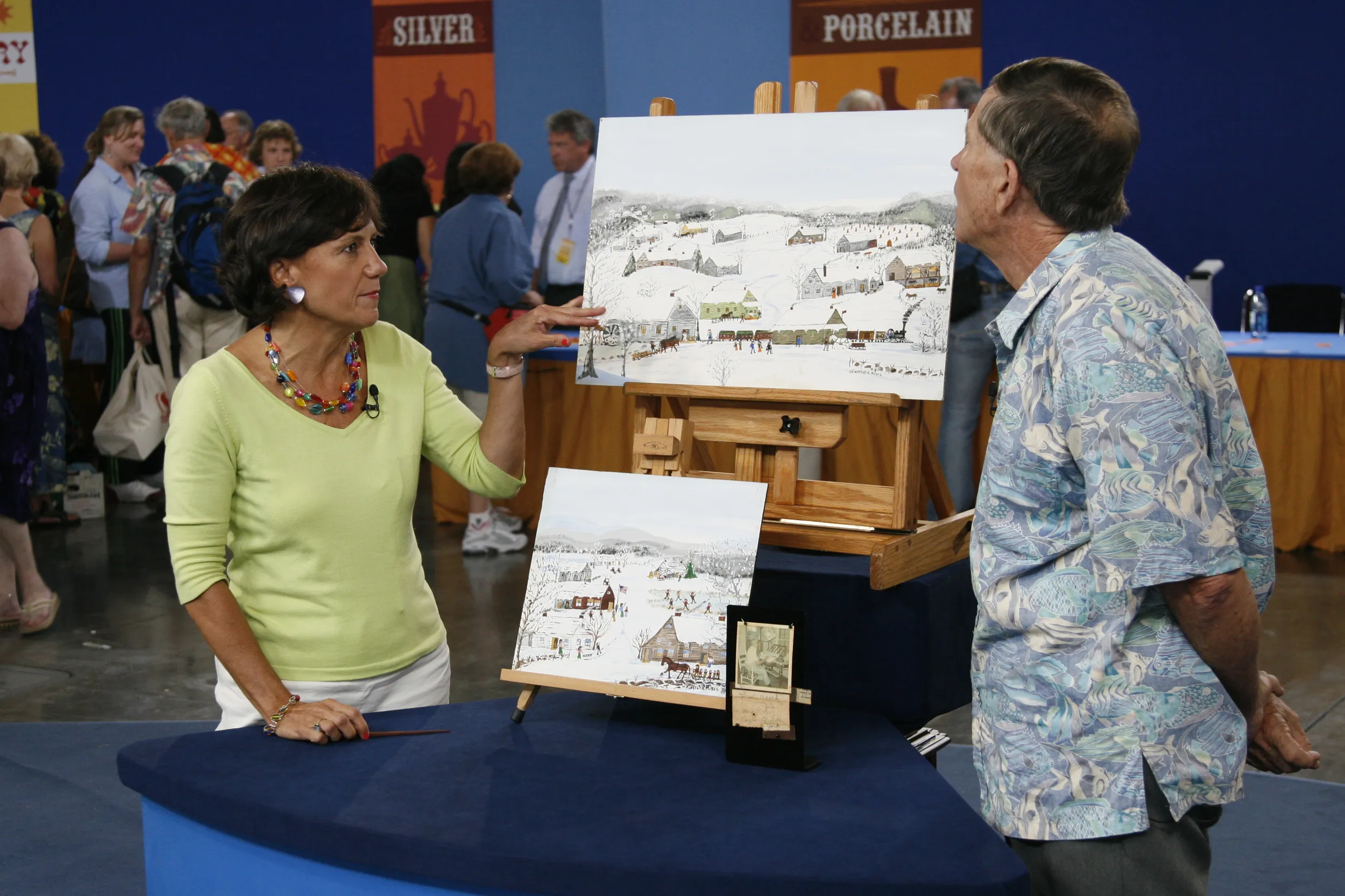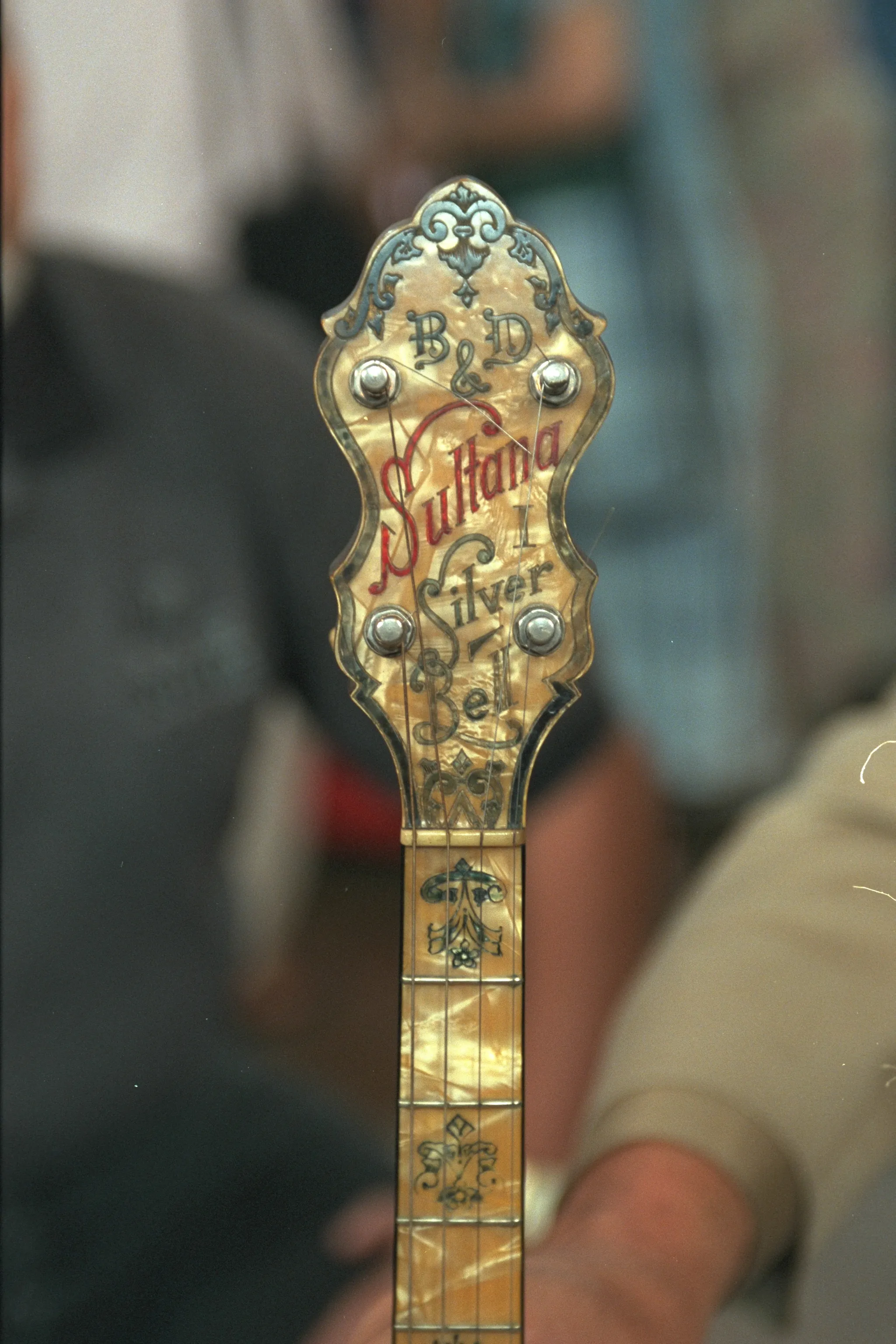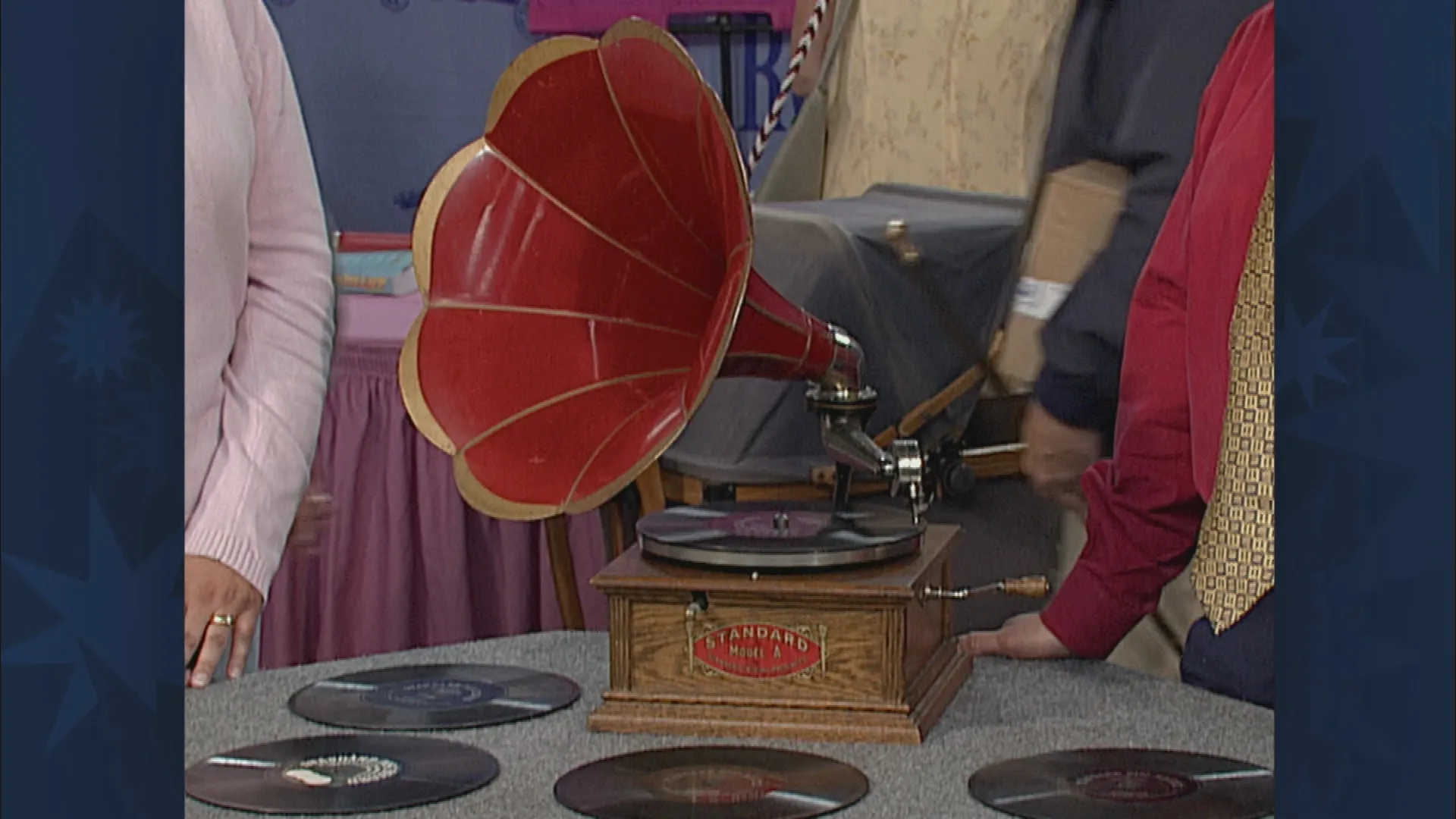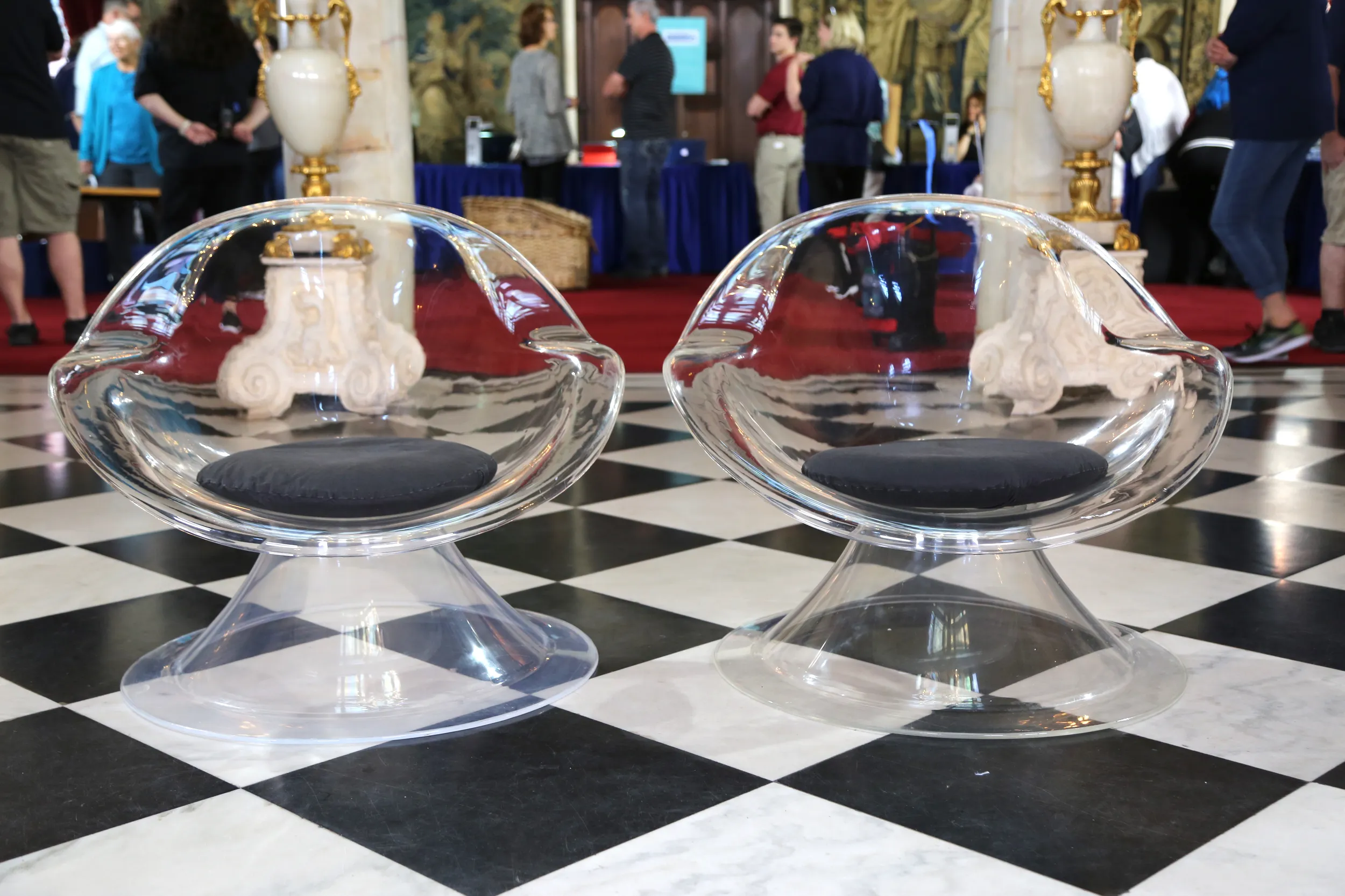GUEST: This was my father's, and my educated guess is that he got this probably about 1915 when he was probably just about 15 years old. 'Cause I think my grandmother wanted him to be some sort of a musician. But he, to my knowledge, really never learned to play. And it kind of sat in the case for about 40 years. And then, my oldest daughter tried to play it. She never learned to play it. And I guess that's why it's in such good shape, because nobody ever was musically inclined in the family.
APPRAISER: Well, how come you held onto it all these years?
GUEST: Well, it was pretty. And maybe I was hoping the great-grandchildren would learn to play it.
APPRAISER: Well, when I opened the case, my eyeballs about popped out. I don't think you could've hung onto a better category of an item. Just in the 30 years, 35 years that I've been interested in bluegrass and old-time music, the one thing that has continued to go up in value is vintage instruments. I know a lot of people that would rather have vintage instruments than money in the bank.
GUEST: Really?
APPRAISER: First of all, all of these Gibsons are signed on the inside. This says "F4" inside of here. Okay?
GUEST: F4?
APPRAISER: F4. F is the shape.
GUEST: Okay.
APPRAISER: They changed the shape a few years before they started making this, and they used to be sort of more of an elliptical shape, and what they started doing was trying to make it look more like a fiddle, with scrolls and everything. Like, look at the finish on the back. That's called a sunburst. This is curly maple. And you got the nice-- this is ivoroid binding, not ivory. Basically, ivoroid is a fancy word for plastic. The tuning keys are all original. Really, the only thing that I see that needs a little attention is, there's a little metal bracket that goes right here that holds the pick guard on.
GUEST: So.
APPRAISER: Let me show you one more thing up here on the peg head. See where it says the Gibson?
GUEST: Uh-huh.
APPRAISER: They had craftsmen in the shop that did this all by hand. And the other thing that amazed me was how wonderful it sounded. Have you ever heard it played?
GUEST: Only somebody plinking across the... No, never heard it played. Never heard it played.
APPRAISER: Well, the other thing that you always want to think about with a vintage instrument is how good it sounds. I'm a musician, myself, so I don't care how valuable something is or how old something is. It's got to sound good.
GUEST: Mm-hmm.
APPRAISER: Well, the bottom line is, in today's market, with the people that are searching after these things in this kind of condition, this would definitely be worth, at least, say, $3,000 to $4,000.
GUEST: Far out, terrific.
APPRAISER: Pretty good for sitting around the house, huh?
GUEST: Oh, yeah. Won't be sitting around the house much longer. (laughing)
APPRAISER: (plays tune on mandolin)
GUEST: (clapping) Very good.
APPRAISER: One string out of tune, but we're still with it.

